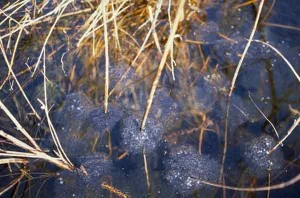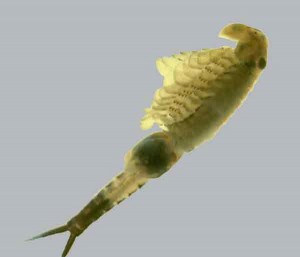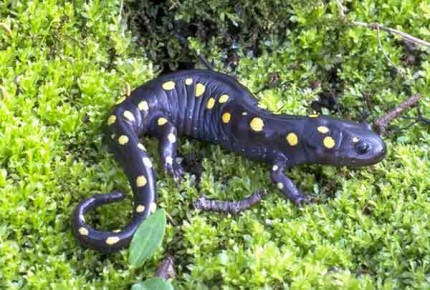
(Chelsea Update would like to thank Tom Hodgson and the Water Natural History Association for the photos and information in this column.)
The vernal pool is a seasonal wetland that usually fills with water in spring, but dries up each year, or often enough so that it cannot support fish. There are many such ponds in the Chelsea area both on public and private land.
They are havens for animals that would not survive the predation of hungry fish, and many organisms have developed the ability to use these wetlands in spite of their temporary nature.

Some species, called obligate, are only found in vernal pools and must have them in order to survive. In addition, there are many other interesting creatures that will use both vernal pools and permanent bodies of water.
Do you have a vernal pool on your property?
If your pond contains any of the following obligate species, you do.
Wood Frogs: live most of the year in upland woods. They go to vernal pools in late March and early April, lay their eggs, and return to the woodlands for the rest of the year. The tadpoles hatch and transform into frogs in as little as six weeks, before the ponds have a chance to dry up.
The presence of breeding wood frogs indicates that a pond is a vernal pool. Their mating period is very short, only a week to 10 days. They head to the ponds once temperature reaches 50 degrees or above. Their loud “quacking” calls can be heard from considerable distance.
To hear a calling wood frog click here. Or, here.
Fairy Shrimp: are small (about 1 inch) crustaceans. which spend their entire adult lives (a few weeks) in a vernal pool. Eggs hatch in late winter/early spring and adults may be observed in pools in March and April. Females eventually deposit egg cases on the pool bottom.
After the pool dries, the eggs pass through a cycle of drying and freezing, and then hatch the next spring when water returns. The presence of fairy shrimp indicates that a body of water is a vernal pool.

Click here to see fairy shrimp in action.
Spotted and Blue Spotted Salamanders: The spotted and blue spotted salamanders are also upland animals. They spend most of their lives in burrows on the forest floor. On certain rainy nights in early spring, they migrate to vernal pools to mate and lay their eggs. The eggs develop in the pool and, by the time the pool dries, the young emerge to begin their life as a terrestrial animal. Presence of breeding spotted or blue spotted salamanders makes that body of water a vernal pool.
In April, the Waterloo Natural History Association is sponsoring a vernal pool exhibit at the Discovery Center, which will include many fascinating living aquatic creatures.
The Discovery Center hours will be 10-a.m. – 5 p.m., Tuesday through Saturday and noon-5 p.m. on Sunday.














